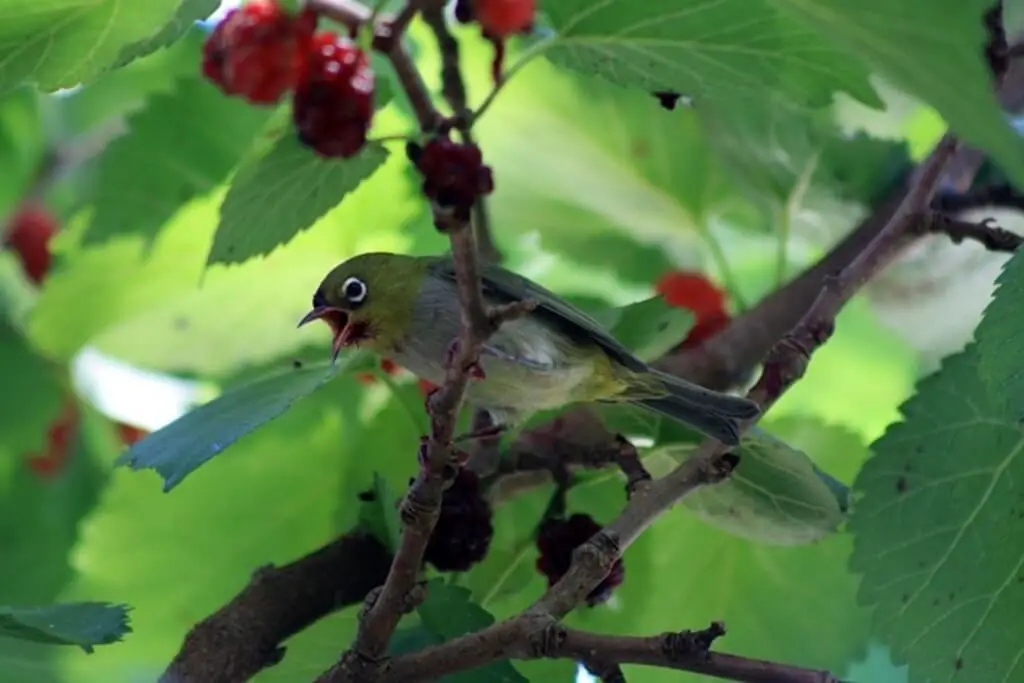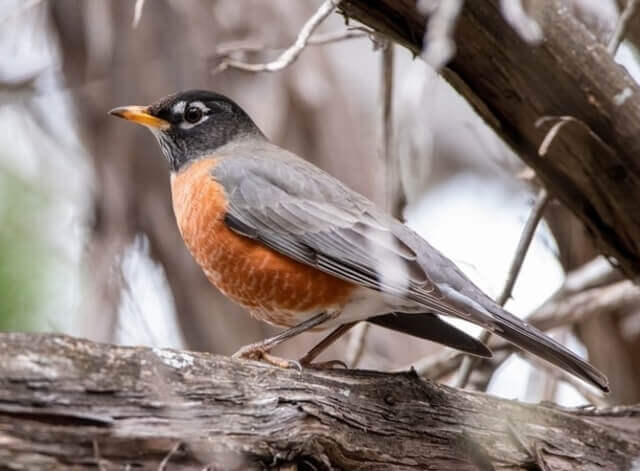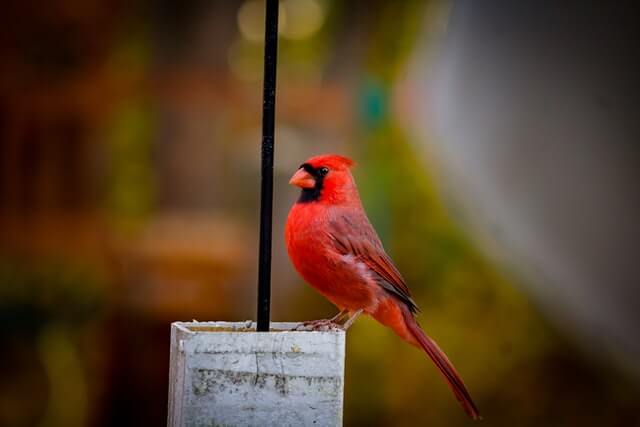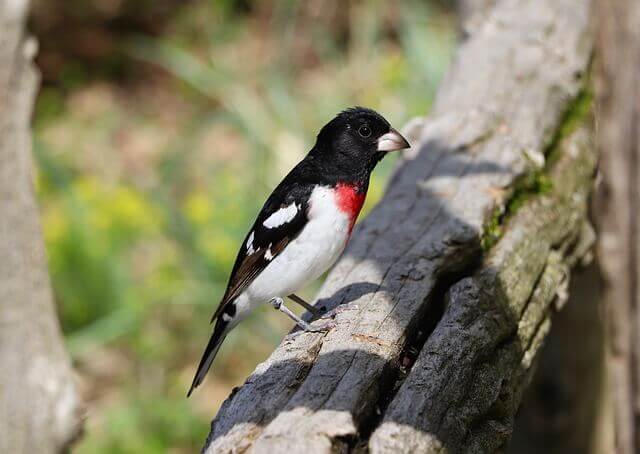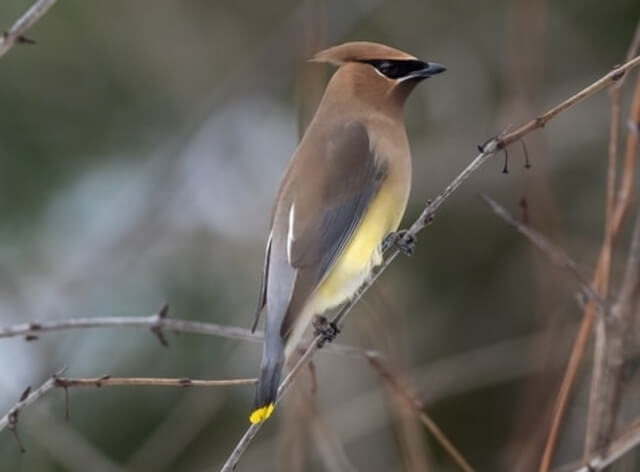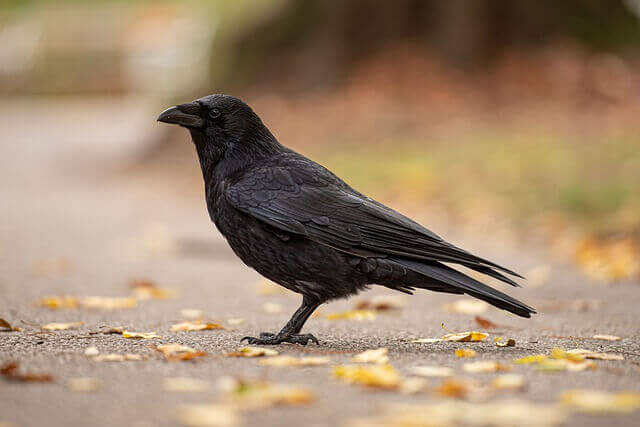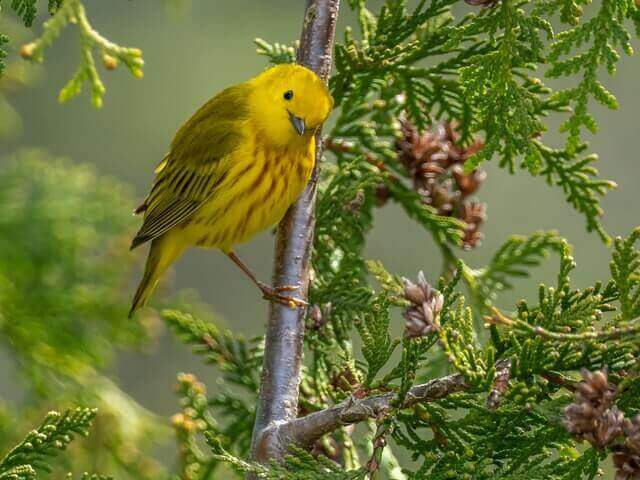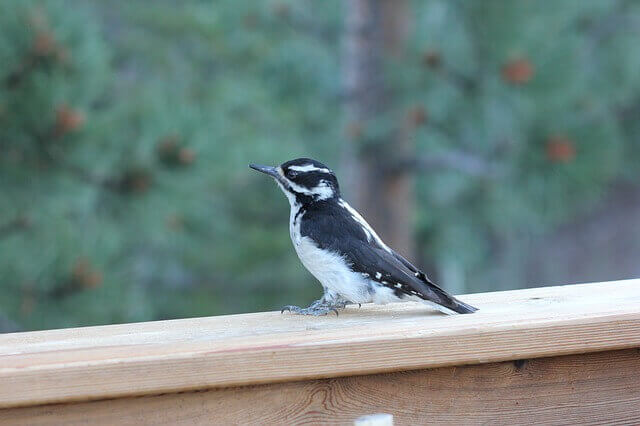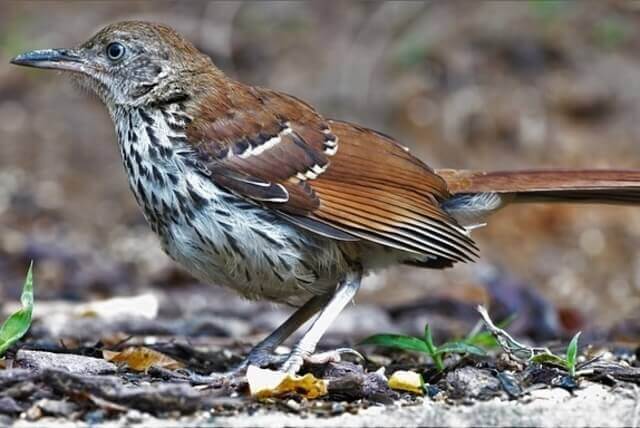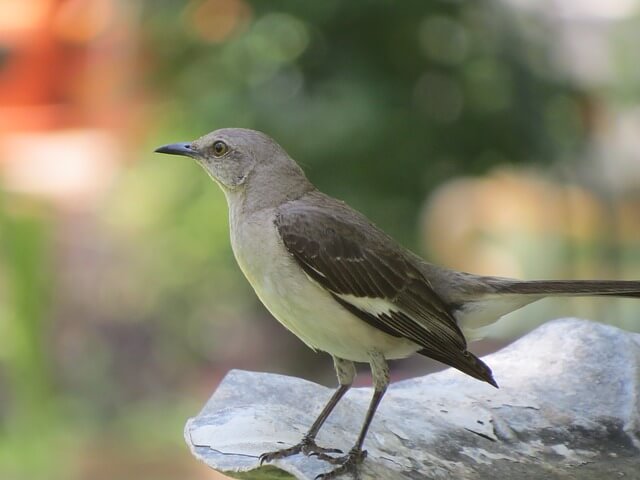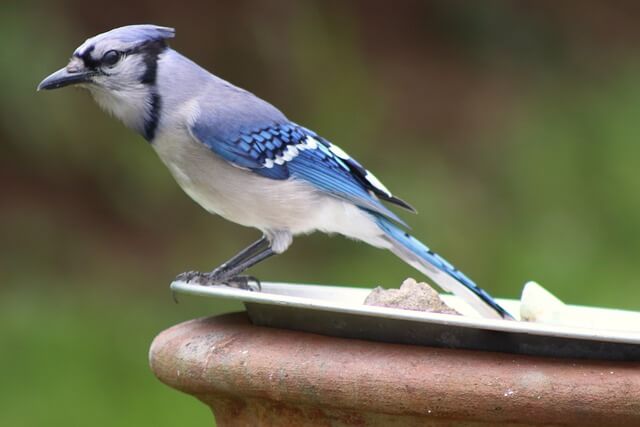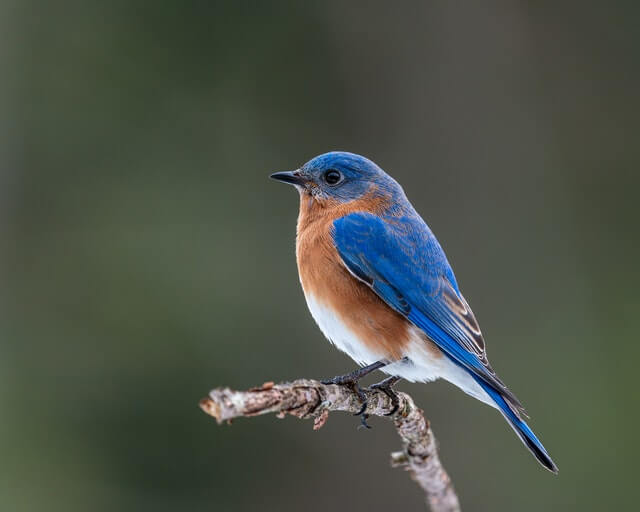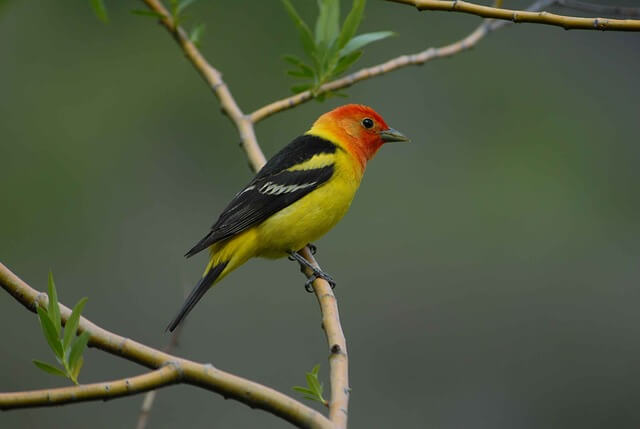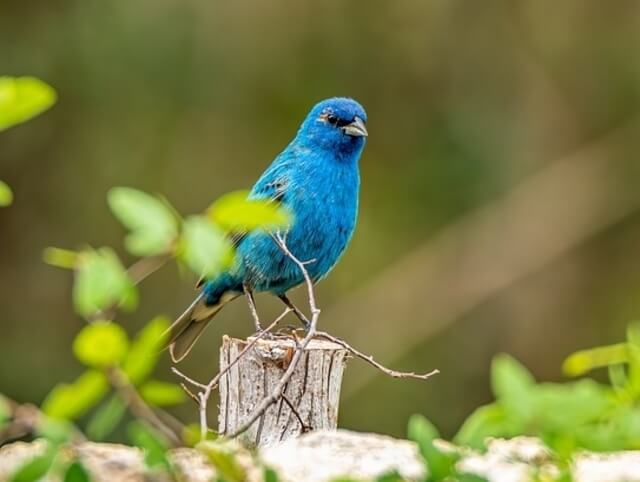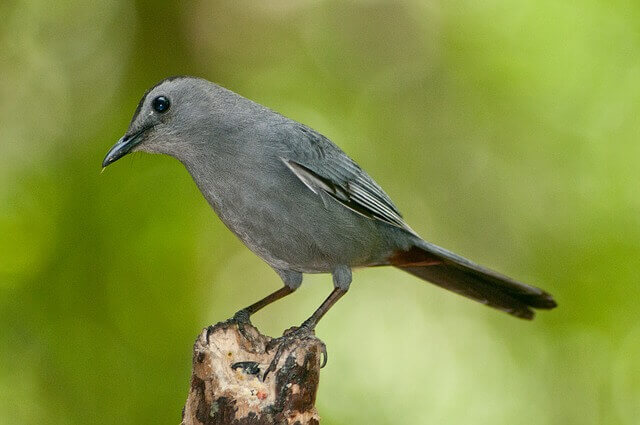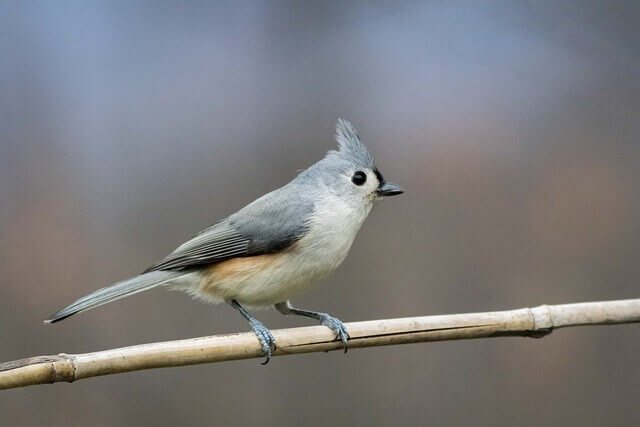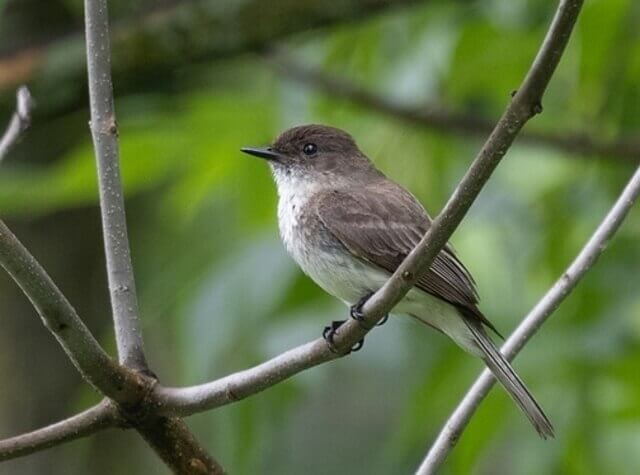If you have a mulberry tree in your backyard, chances are that there are birds who love to visit it. Mulberries are a favorite fruit for many backyard birds.
In this article, we will be exploring 17 of the most common types of birds that enjoy eating mulberries with Photos, ID & Information about each species.
Table of Contents
American Robin
Robins are a type of bird that can be found almost anywhere around the world. These birds have many characteristics, and they enjoy eating berries from time to time.
Mulberries are one type of berry that robins love to eat, and will always come back for more if there is an abundance of mulberries available. They will eat them when they are in season from late summer to early fall.
Northern Cardinal
Are you wondering if Cardinals eat mulberries? The answer is yes. Cardinals are attracted to the berries because they love their tart taste and sweet smell.
These beautiful birds can be found eating mulberries from all over North America, including in some parts of Asia and Europe as well. In the summer months, when berries are in season, cardinals will enjoy eating mulberries on a regular basis.
Rose-breasted Grosbeak
A Rose-breasted Grosbeak is a beautiful bird that lives in North America. These birds live in the Eastern United States, but they can be found as far west as California.
The Rose-breasted Grosbeak loves to eat mulberries. This particular type of bird eats many types of berries, but they are especially fond of the black and red mulberry.
Cedar Waxwing
Mulberries are a favorite food of Cedar Waxwings. These birds eat them year-round, but they do so in large numbers during the summer, when mulberries ripen and become sweeter. Cedar Waxwings use their brushy tongues to lick up the sweet juice that seeps from ripe berries.
The birds also make an audible clicking sound with their beaks as they feed on these berries, which helps spread seeds throughout the forest and into other parts of the plant’s range.
American Crow
Crows are known to be intelligent and resourceful creatures. They will often take advantage of food sources in their environment that other animals would not even consider. Crows have been observed on occasion eating from the mulberry tree, which is typically only eaten by certain species of birds or mammals.
These particular crows had located a branch with an abundance of ripe berries hanging over the sidewalk below and used it as a platform for feeding on the fruits high up in the tree’s canopy.
Warblers
Warblers will eat mulberries when berries are scarce. When food sources dwindle, these beautiful birds will change their diet to accommodate what’s available.
Warblers rely on insects for most of their diet during breeding season, but they also need plenty of berries to fuel up for migration. A healthy mix of wild foods such as insects, spiders, fruits and nectar provides an important nutrient for a bird’s health and survival.
Woodpeckers
The majority of woodpeckers are insectivores, but occasionally they will eat mulberries. One species that will eat mulberries is the red-headed woodpecker, which prefers to stay in the forest canopy, where it feeds on insects and larvae.
The other is the northern flicker, which also eats berries as well as ants and termites. Woodpeckers often pick up seeds from their food source before moving onto another tree or plant for feeding again.
Brown Thrasher
Brown Thrashers are a type of bird that can be found in North America. The birds are brown with streaks on their breast, and they often feed on insects, berries, fruit, and grain. They’re omnivores, so they will eat whatever is available to them as long as it’s healthy for them.
Mulberries are a type of berry which the Brown Thrasher will sometimes consume while feeding on other food sources such as grasshoppers or berries from nearby plants.
Northern Mockingbird
Northern Mockingbirds are one of the most common birds in North America. They typically eat insects, spiders, berries and seeds.
One type of food that they seem to enjoy eating the most is mulberries, which can be seen by their almost constant presence at mulberry trees. They love to eat them in the morning, midday, and evening. They can’t get enough of these delicious berries!
Blue Jay
Blue Jays are large, colorful birds that can be found in many regions of the United States. These birds have a very diverse diet and will eat nearly anything they come across.
The one food item that has been spotted as part of their diet is mulberries, which grow on trees in wooded areas or around homes with gardens.
Bluebirds
Bluebirds are songbirds, and they love to eat mulberries. They will often come into a garden and eat the berries off of a tree. The reason for this is that these berries are a high source of nutrition for them.
The best time to spot them is during their mating season in springtime, when they build nests made from mosses, lichens and grasses in trees or shrubs near woodland paths.
Tanagers
Tanagers are colorful songbirds that are commonly found in the Americas. Do tanagers eat mulberries? Tanagers primarily feed on insects, but they will also consume berries if available.
Mulberries are not among their preferred foods, and they usually do not eat them unless other food sources have been depleted. Tanagers will eat mulberries when they are ripe. They will also eat insects that live on the mulberry tree, such as caterpillars and wasps.
Orioles
Orioles are birds that like to feed on the fruit of the Mulberry tree. They typically come out in May and June, during breeding season, and fly around looking for berries on these trees. They eat both ripe and unripe berries because they are very opportunistic when it comes to food sources.
This behavior is observed all over North America, but they are most common in the southeast area of the United States, where there is a higher density of mulberry trees than other parts of the country.
Indigo Bunting
The Indigo Bunting is a small songbird native to North America. One thing about the Indigo Buntings, is that they like to feed on the fruit of the Mulberry tree. These birds are often seen in large numbers, gathering around a Mulberry tree and feeding off of its sweet fruit.
In order to get their food, they will spend hours clinging onto the branches and ripping apart the berries with their beaks. They can easily eat up to 15% of their body weight in one day if they find enough mulberries!
Gray Catbird
In the northeastern United States, catbirds are known to eat mulberries. The berries are their favorite food, and they can be found in abundance during the late summer months.
These small songbirds also feed on insects, caterpillars, spiders and other bugs that may be plentiful at this time of year. They have a preference for eating ripe fruit, but will not pass up any opportunity to get some food if need be.
Tufted Titmouse
The Tufted Titmouse is a songbird found in the eastern United States and prefers forests, woodland edges, hedgerows, parks and suburban yards with fruiting trees.
The tuft on its head, which gives it its name, is not an ornamental crest like those found on many other species, but a short-haired feature unique to this species. It feeds primarily on insects and seeds and will also eat berries such as mulberries.
Flycatchers
Many bird species eat fruit, and it is common for many of these birds to be seen eating mulberries. However, flycatchers are a group of insectivorous songbirds that have a diet consisting mainly of insects and arthropods.
These types of birds typically prefer to consume flies, beetles, spiders and ants, but will also feed on berries when other food sources are scarce.

